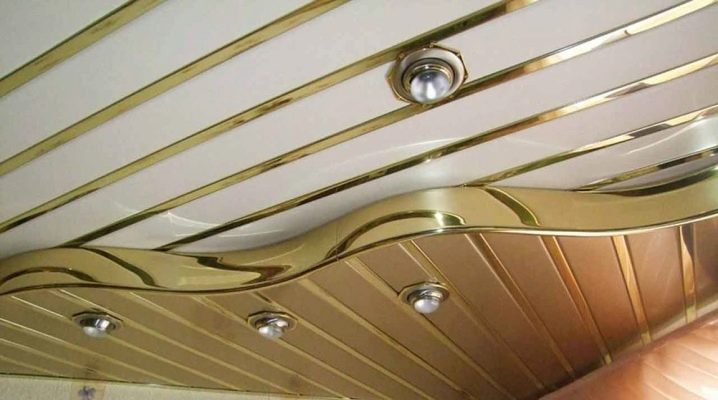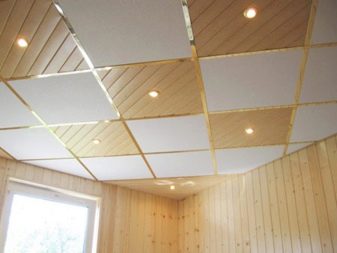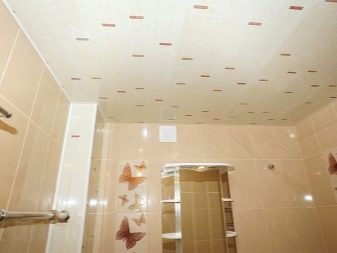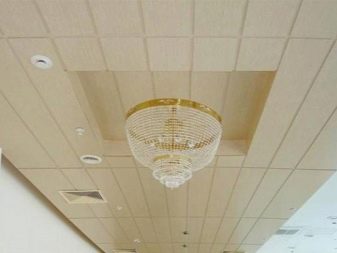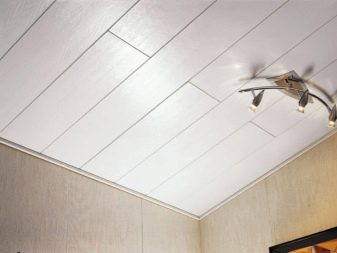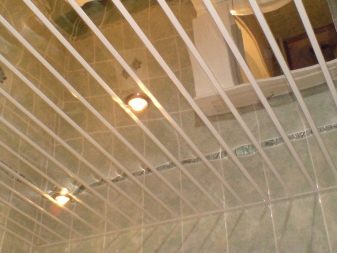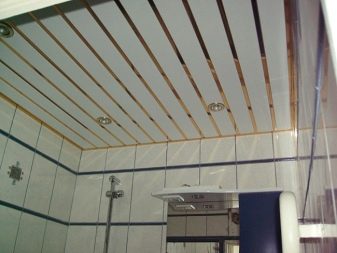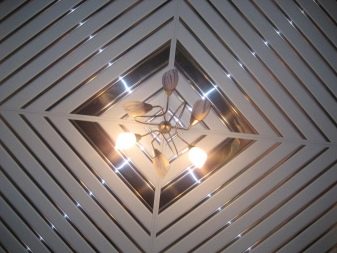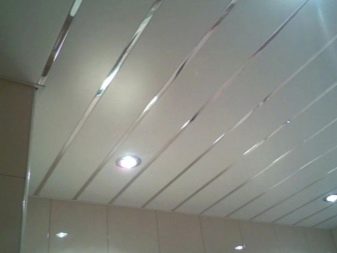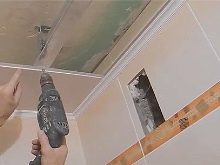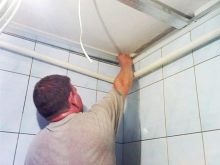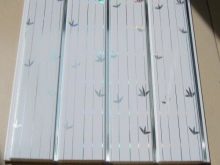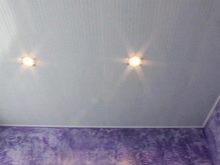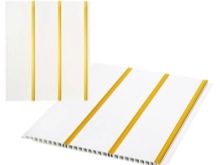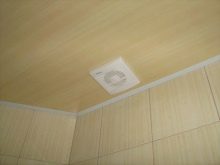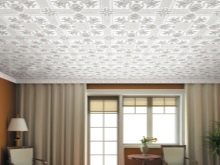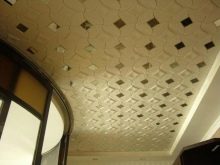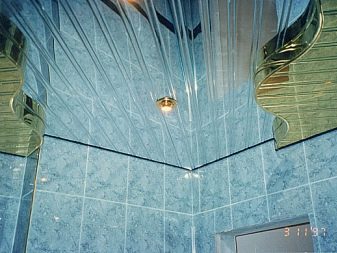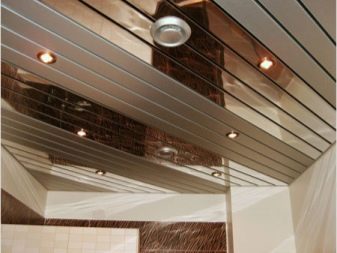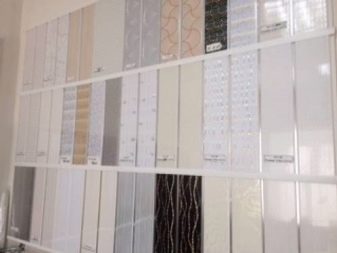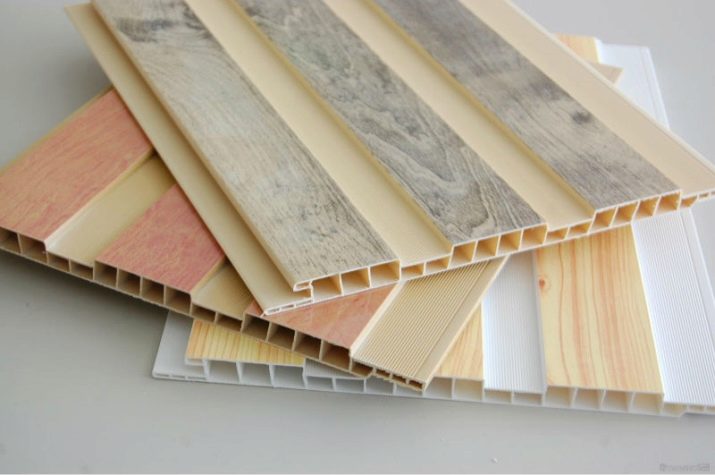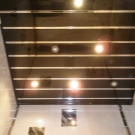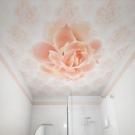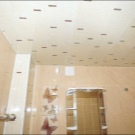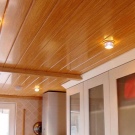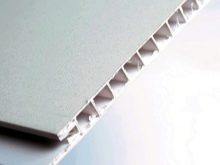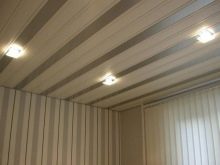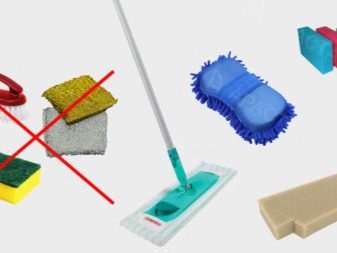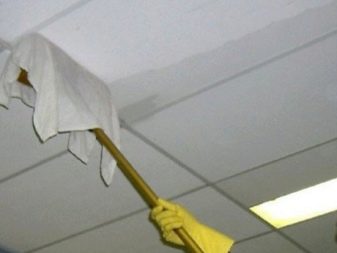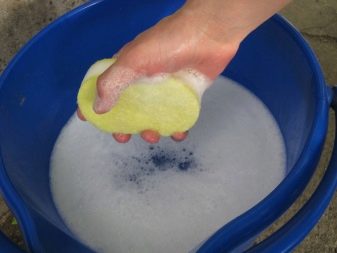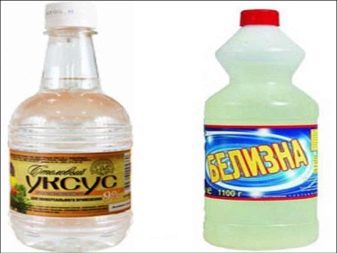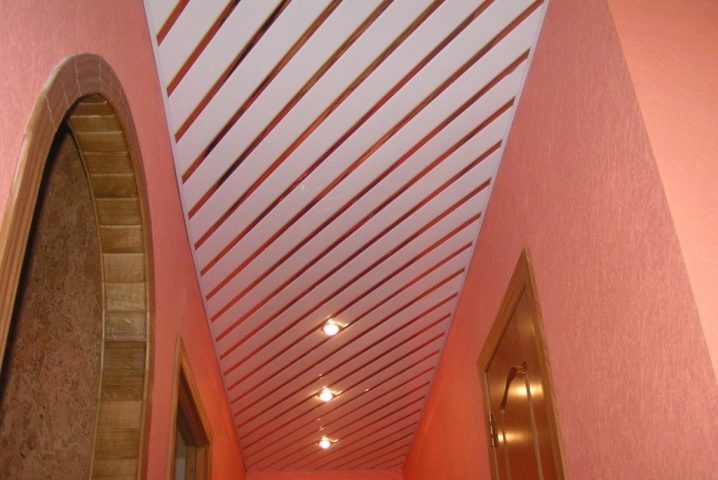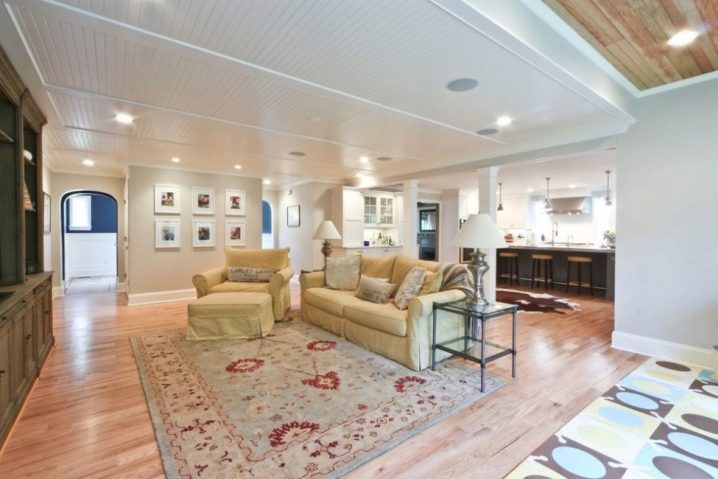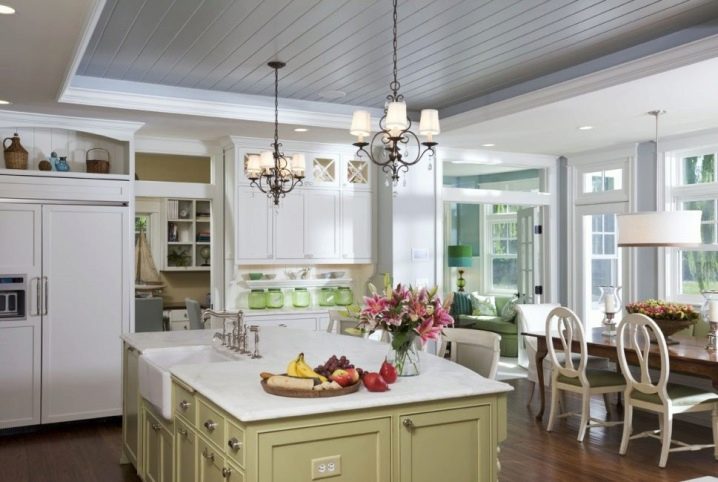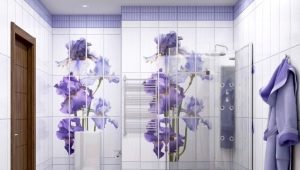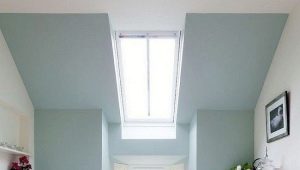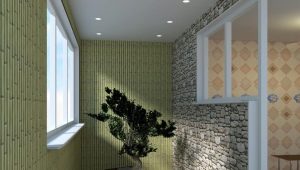PVC ceiling panels: types and characteristics
Options for the ceiling today, there are many. To decorate its surface with the help of PVC panels is an inexpensive solution that gives an excellent result. A wide selection of ceiling plastic panels allows you to realize even the most unusual design idea.
Features and benefits
Polyvinyl chloride, which serves as the basis for the creation of ceiling panels, is a harmless to the human body and easy-to-use material. The industrial mixer mixes special additives with PVC powder into a kind of dough, from which elements of the desired shape and size are made by molding. Then on products put images by means of an offset printing.
These finishing materials are often called "clapboard" by analogy with a wooden board., which since the time of use for the internal arrangement of passengerwagons continue to be applied in a wide variety of premises.
Plastic panels have a variety of useful properties.
- They are resistant to moisture, and therefore they can be finished not only in ordinary rooms, but also in rooms with high humidity, for example, bathrooms and kitchens.
- On the surface of such products does not form mold.
- They withstand significant temperature differences. Due to this, they can be safely attached, for example, on the balcony.
- The method of their installation is simple, and individual components can be easily dismantled and replaced if necessary.
- The cost of such materials is low.
- For installation, it is not necessary to prepare the main ceiling, but under the panels themselves hide all the irregularities and defects of the “natural” ceiling surface.
- After installation, such coatings will serve for at least ten years and, rather, they will want to be renewed due to the fact that the pattern or color is naked to the eyes, than due to the physical deterioration of the ceiling components.
- Dismantled panels can be reused, including in another place. If they found a replacement in the apartment, they can continue to serve, for example, on the dacha ceiling.
- Plastic ceilings are easy to maintain.
- It is possible to conveniently and simply fasten the panels to each other. For this, there is a groove on one side of the product, and a thorn on the other.
The negative side of the use of ceiling plastic panels is that the installation "eats" a few centimeters of the height of the room. If in rooms with high ceilings this is insignificant, then where they are low, a discomfort may occur after installing the suspension system.
Kinds
Ceiling panels can be divided into two types: suture and seamless. Suture method allows you to create a texture on the ceiling according to the type of clapboard trim made of wood. In the second case, if the laying of the panels is carried out correctly, a smooth surface is obtained, on which there are practically no visible traces of the connection of individual components.
Certain types of finishing material can be two-section, three-section elements., as if collected from strips of different widths. At the same time, narrow “inserts” can be made out of metal, giving the ceiling surface a representative and modern look.
Also made of plastic elements are the so-called slatted ceilings. They are assembled from narrow and long lanes - rails. Such constructions are sometimes mounted in bathrooms. Often found in public buildings, with which their appearance is mostly associated. Unlike other plastic panels, the slats cannot be dismantled one at a time, and therefore they are not very convenient in everyday life.
Also, externally, individual elements of a suspended ceiling may look smooth and grooved. There are even 3D panels - three-dimensional, from which unusual coatings are formed. But with all the external wealth of corrugated and voluminous panels in the protruding parts often accumulates dust, the removal of which during cleaning requires great labor costs. But even with regular care, such a ceiling still loses its former aesthetics over time.
On sale you can find mirror panels. A reflective film is applied to the surface of such elements, due to which they receive a reflective effect. Such components of the future ceiling have some restrictions on the application. Compared to others, they are not resistant to moisture, so they cannot be used for interior decoration of bathrooms.
Dimensions and shapes
The shapes and sizes of ceiling panels are very varied.They can be square and rectangular, narrow and wide, and even be curved elements. It all depends on the manufacturer’s own standards.
On the market, you can often find ceiling panels with a length of 2.4-4 meters. Standard is the length of 3 meters. Width of products varies from 10 to 50 cm. Thickness generally does not exceed 10 mm.
Colors and decor
For finishing the ceilings, you can choose matte or glossy products. More often, people prefer a glossy ceiling, as it is easier to clean and visually adds height to the room.
PVC plates can be white or patterned. With the help of offset printing, various images are often put on the front side under various tree species, stone, and other natural “patterns”, for example, the sky in the clouds. The front side of such a product is covered with a protective film that must be removed during installation. Two- and three-section panels allow you to make a striped ceiling with narrow silver or gold inserts.
Also, monotonously painted panels allow you to implement a simple design solution for the design of the ceiling in accordance with the overall color scheme of the room.It is noticeably more difficult to use such products, of which, like from cubes, you need to lay down the overall image. But the result is impressive.
How to choose?
The task of any repair is to make its results pleasing, and there was no desire to return to the issue of interior renewal in a short time. In this sense, customer reviews are more often addressed in the direction of which ceiling design option to choose in principle, and not on how to choose one or another panel.
If the choice fell on the design with the help of PVC ceiling, you should follow certain rules when choosing panels.
- Given the size of the room, it is necessary to calculate in advance what the length of the products will be optimal. After the installation of the ceiling, plastic waste should remain a minimum amount. If, for example, repair is planned in a bathroom whose width is about 2.5 meters, then the length of the wall panel should also be 2.5 or 5 meters.
- If the price of the goods in the hardware store is small, it is better to check the plastic carefully. Cheapness can go sideways.
- In any case, leaning towards one or another variant, you should evaluate the appearance of the product, the clarity of its geometry, pattern, how smooth the surface is, whether there are scratches, dents or any other damage on it.
- What matters is the reliability of the stiffeners and the plates themselves. The panel should be slightly squeezed with your fingers, if it bends - the product is bad. High-quality panels cannot respond in this way to simple compression.
Care instructions
The ceiling, like everything in the house, needs to be put in order from time to time. Dust settles on any surface.
To clean the plastic panels above your head and preserve their former attractiveness, you need to follow a number of rules.
- Before the ceiling starts, it is necessary to vacuum it. This will avoid the formation of excess stains in the process of further cleaning.
- Do not use abrasive cleaners that leave scratches on a smooth surface.
- No need to use brushes with stiff bristles (for the same reason).
- To wash the best fit cloth from flannel, microfiber, foam sponge.
Do not wash the ceiling, standing on the floor with a mop and a rag wound on it. It is better to take a place higher - on the table or stepladder. So do not have to push much on the panel, which under excessive pressure may remain dents.
- As a cleaning agent, you can take the usual soap solution. In addition to soap, you can add liquid dishwashing detergent to water.
- It should be borne in mind that the soap containing 72% of alkali can spoil the ceiling.
- When heavily soiled, vinegar or vodka can be added to the solution, but if the panels are with a pattern, such detergent composition may damage the image.
- If the plastic has turned yellow, it is permissible to add bleach to the water at the rate of two or three tablespoons per 10 liters of water. The washing should be carried out with the same movements in the same direction in order to avoid the formation of stains.
It so happens that the suspended ceiling is so dirty that simple washing does not help. In this case, there are no other options other than how to disassemble it, remove the panels and rinse in the joints, from which it is impossible to remove contamination when the components of the decorative ceiling are interconnected.
Beautiful examples in the interior
The ceilings of PVC panels can be decorated in a simple, and in the most original, even elaborate version.
With an unusual design plastic suspended ceiling in the bathroom with the image of a butterfly can compete with the tension.Interior lighting will make the design more elegant and representative.
An interesting design technique for decorating the ceiling in the hallway can be a diagonal arrangement of the slats. This makes the decor fun.
The option of finishing the ceiling under a tree in the bedroom is a win-win even in an apartment, even in a private, especially wooden house.
In the hall with high ceilings there are great opportunities for the use of plastic panels. With their help, you can select a specific zone. At the same time such material is well combined with other types of ceiling decoration. For example, with a tree or with clapboard "under the tree."
In the large kitchen, combined with the dining room, with the help of panels, you can mark the zone on the ceiling. This will diversify the interior and emphasize its dignity.
How to independently mount PVC panels for the ceiling, see the following video.
